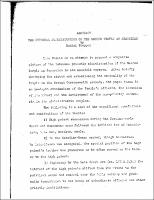Please use this identifier to cite or link to this item:
https://hdl.handle.net/20.500.12202/8522Full metadata record
| DC Field | Value | Language |
|---|---|---|
| dc.contributor.advisor | Hoenig, Sidney B. | |
| dc.contributor.advisor | Bernstein, Michael | |
| dc.contributor.advisor | Feldblum, Meyer S. | |
| dc.contributor.author | Tropper, Daniel | |
| dc.date.accessioned | 2022-11-10T17:29:15Z | |
| dc.date.available | 2022-11-10T17:29:15Z | |
| dc.date.issued | 1970-06 | |
| dc.identifier.citation | Tropper, D. (1970, June). The internal administration of the second temple at Jerusalem (Publication No. 302568101) [Doctoral dissertation, Yeshiva University]. PDTG | en_US |
| dc.identifier.isbn | 9798641299006 | |
| dc.identifier.uri | https://ezproxy.yu.edu/login?url=https://www.proquest.com/dissertations-theses/internal-administration-second-temple-at/docview/302568101/se-2?accountid=15178 | en_US |
| dc.identifier.uri | https://hdl.handle.net/20.500.12202/8522 | |
| dc.description | Doctoral dissertation, PhD / Open Access | en_US |
| dc.description.abstract | This thesis is an attempt to present a composite picture of the internal priestly administration of the Second Temple in Jerusalem in its manifold aspects. After briefly surveying the status and establishing the centrality of the Temple in the Second Commonwealth society, the paper turns to an in-depth examination of the Temple’s officers, the direction of its ritual and the involvement of the non—priestly Sanhedrin— flu in its administrative complex. ¶The following is a list of the significant conclusions and contributions of the thesis: ¶1) High priest succession during the Persian—early Greek and Hasmonean eras followed the biblical law of inheritance, i.e., son, brother, uncle. ¶2) In the Herodian—Roman period, though succession by inheritance was abrogated, the special position of the high priest’s brother was preserved as he often served as the back up to the high priest.¶ 3) Beginning by the late Greek era (ca. 175 B.C.E.) the interest of the high priests shifted from the ritual to the political arena and control over the daily worship was gradually transferred to the hands of subordinate officers and other priestly institutions. ¶4) To prevent the establishment of a politically dangerous dynastic high priesthood, Herod and his followers banned the direct succession of a father by his son to the high priesthood.¶ 5) The _bnai kohanim gedolim_ the rabbinic analogue of _archiereis_ and was a group composed solely of former high priests (including _kohanim she-avar).¶ 6) The _segan ha-kohanim_ was the private ritual assistant of the high priest.¶ 7) The _strategos_ of the Temple is not to be identified with the _segan_. He had absolutely no relation to ritual but was a security officer in the Temple.¶ 8) The _kohen ha—mishneh_ and _nagid bet ha-Elokim of the late first and early second Temple eras, may be recognized as precursors of the _segan_ and _strategos_ respectively.¶ 9) There were a number of priestly institutions or committees governing various aspects of’ the Temple and the priests. Each was called a _bet din shel kohanim._¶ 10) Although a _bet din shel kohanim_ was charged with ultimate responsibility for the proper performance of Temple ritual, a number of officers, _memunim_, acted as actual directors of ritual. They provided the strand of continuity in the face of the constantly changing _mishmarot_, and originated during the Hasmonean period.¶ 11) The _memunim_ listed in Mishnah Shekalim are standard names for the officers occupying these positions in every generation. They had far more tasks and broader authority than the limited duties indicated by the mishnah.¶ 12) The _hazan_ was a menial aide in Temple procedural activities. The _Ish Bar ha—Bayit_ and _Baal ha—Pul_ were low— ranking police officials.¶ 13) A delicate détente was reached between the priests and Sanhedrin in their duel to win jurisdiction over the Temple. Though the priests maintained actual control, the Sanhedrin involved itself in Temple affairs in a variety of ways:¶ a. _Zikeinim_ were dispatched by the Sanhedrin to oversee rituals (usually involving Sadducee—Pharisee differences) such as the Day of Atonement and red heifer ceremonials.¶ b. The Sanhedrin instituted a number of ceremonies involving their participation and deemed the practices prerequisites c. The priests conducted certain judicial processes but the formal approval of the Sanhedrin was required to validate their decisions. | en_US |
| dc.description.uri | https://yulib.yu.edu/lib/item?id=chamo:255819&fromLocationLink=false&theme=YULIS | |
| dc.language.iso | en_US | en_US |
| dc.publisher | Yeshiva University | en_US |
| dc.relation.ispartofseries | ProQuest document ID;302568101 | |
| dc.relation.ispartofseries | Dissertations, Ph.D. (B.R.G.S.); | |
| dc.subject | Ancient civilizations | en_US |
| dc.subject | Ancient history | en_US |
| dc.subject | Temple of Jerusalem (Jerusalem) | en_US |
| dc.subject | Jews --History --586 B.C.-70 A.D. | en_US |
| dc.subject | Sanhedrin | en_US |
| dc.subject | Priest, Jewish | en_US |
| dc.title | The internal administration of the second temple at Jerusalem | en_US |
| dc.type | Dissertation | en_US |
| Appears in Collections: | Bernard Revel Graduate School of Jewish Studies: Doctoral Dissertations | |
Files in This Item:
| File | Description | Size | Format | |
|---|---|---|---|---|
| Daniel Tropper OA 1971 The Internal Administration BRGS.pdf | 10.5 MB | Adobe PDF |  View/Open |
Items in DSpace are protected by copyright, with all rights reserved, unless otherwise indicated.
